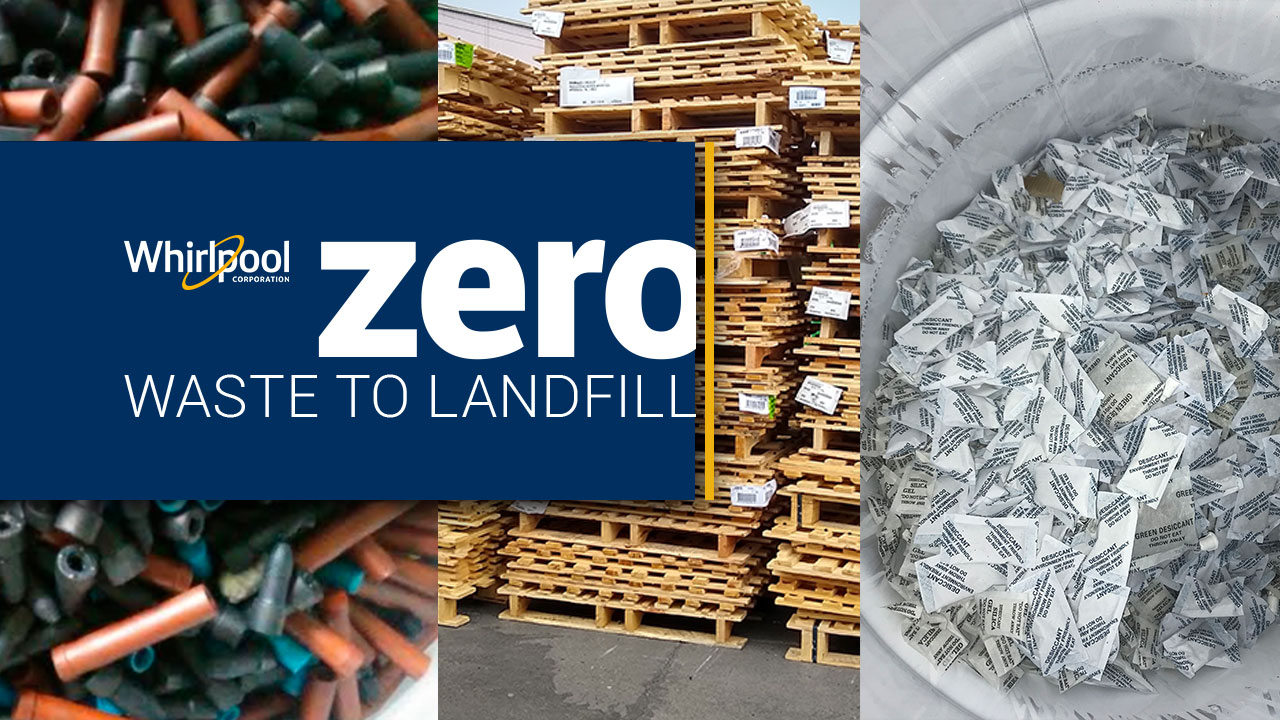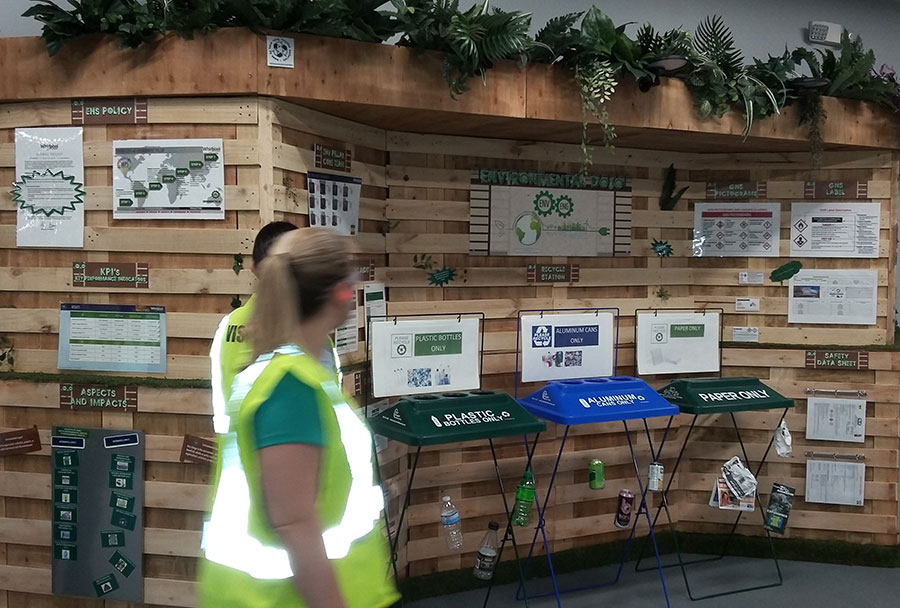
“In 2012 we announced that we had a goal of zero waste to landfill in our annual Sustainability Report, and we gave ourselves 10 years to get there,” said Milton Mondardo, global lead for Sustainability Plant Efficiency at Whirlpool Corporation.
The first region globally within Whirlpool that reached the zero waste to landfill goal was the Latin American Region (LAR) in 2015, where Mondardo previously worked. “At that time, we had a vice president for institutional relations and sustainability, and he decided our region was going to be the first to reach zero waste to landfill.” Mondardo’s leading experience and expertise is the driving force behind Whirlpool Corp’s global plant efficiency program, which includes the zero waste to landfill commitment.
With a continuous improvement mindset, we keep investing in our plants’ efficiency, water, energy, and waste management.”
The team in Latin America worked with procurement to select new suppliers and with recyclers to find new state-of-the-art technologies. “We substituted processes and materials in our operations within industrial engineering, participating with product development for us to get there in terms of changing materials, changing processes and reducing generation of waste, and then eliminating the waste to landfills,” says Mondardo.
Between 2012 and 2015, LAR had three plants reach their goal. India was the next manufacturing operation to move towards zero waste to landfill, followed by the Europe, Middle East, Africa region (EMEA).
“We have three plants in India, and two of them reached zero waste in 2017. After that, in 2018 we had the same results for some of our plants in EMEA, in Europe, with three of them reaching zero waste to landfill.”
In all of the regions, these results were reached through collaborations with recyclers and other vendors by members of Whirlpool Corporation’s sustainability and procurement teams. The company continues to invest in plant efficiency each year across the globe, and is also working to decrease waste in non-industrial sites as well. Whirlpool Corporation’s World Class Manufacturing System and the efforts of the company’s manufacturing teams worldwide help to speed up the process through continuous improvement.
“Our zero waste to landfill efforts are brought to life on the plant floor through the ideas and discipline of our EHS and facilities management teams,” Mondardo said. “They have helped us identify, track, and segregate our waste streams to better manage and find alternative options to landfills. We have even started to eliminate the waste streams, upstream, by improving our processes and helping to design waste out of the system.”
 But all of this is not easy. Different policies and practices in the various regions across the globe where Whirlpool Corporation does business also make the project a bit tricky at times. This is why Whirlpool looks to external cross-industry standards to help guide its work and benchmark best practices. That input and focus has led to a majority of their plants worldwide receiving ISO 14,000 third party assurance and certification letters for increased environmental management.
But all of this is not easy. Different policies and practices in the various regions across the globe where Whirlpool Corporation does business also make the project a bit tricky at times. This is why Whirlpool looks to external cross-industry standards to help guide its work and benchmark best practices. That input and focus has led to a majority of their plants worldwide receiving ISO 14,000 third party assurance and certification letters for increased environmental management.
“With a continuous improvement mindset, we keep investing in our plants’ efficiency, water, energy, and waste management,” said Mondardo.
Currently, eight Whirlpool Corp. sites globally claim the zero waste to landfill title. This progress has been tracked with Resource Advisor from Schneider Electric monthly since 2015, and Whirlpool Corporation’s Global Sustainability team fully expects a big jump in the number of plants reaching zero waste to landfill status this year, keeping them on-track to reach their zero waste to landfill goal for all manufacturing sites by 2022.
“We are in a transition phase,” explains Mondardo. “We are adopting a different approach.” A new standard from the well-known global safety standards organization UL was adopted about a year ago, which scores the plants based on the percentage of waste diverted from landfill. When using this measurement, the vast majority of Whirlpool Corporation’s plants are currently scored at the Silver Level, which means 90 percent or more of waste is diverted from landfills and incineration.
“As published in our 2019 sustainability report, we have an industry leading waste recycling and waste to energy rate above 96 percent. Globally, only 3.5 percent of waste is directed to a landfill.”
This means a significant majority of Whirlpool plants are at the gold level, with the maximum amount of waste sent to landfill or incineration no larger than 5 percent, a significant achievement for any company. Through the continued joint efforts of Whirlpool Corporation’s Global Sustainability, Manufacturing, Environmental Health & Safety and Procurement teams, the future continues to look bright.
“Our defined commitment is to be at the Gold level minimum for all of our manufacturing plants globally by the end of 2022, and we have every expectation to hit that target.” said Mondardo.